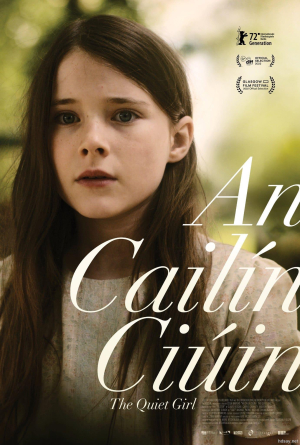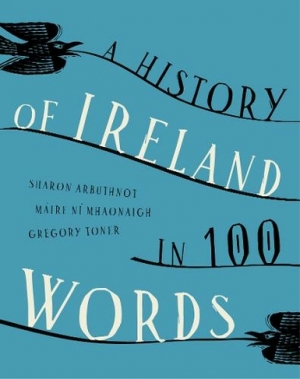
An Cailín Ciúin’ and the growth of Irish language film-making
In January 2023, An Cailín Ciúin (‘The Quiet Girl’) became the first Irish language film to receive an Oscar nomination and it has proved to be the most successful of all time. For many viewers, it is their first time to come across an Irish language feature-length film and while it may seem like the birth of a genre, the seeds of this success were planted some years ago.
Although the German anti-war epic All Quiet on The Western Front (Im Westen nichts Neues) took home the 2023 Oscar for Best International Feature Film – the award for which An Cailín Ciúin had been nominated - the Irish language certainly left its mark on the Oscars this year. The very presence of the cast and crew of An Cailín Ciúin in itself was significant but there were other telling signs. In accepting the award for best visual effects due to his work on Avatar: The Way of Water, Richard Baneham from Tallaght said “Go raibh maith agat” to the film's director, James Cameron. The subtitled An Cailín Ciúin was screened in 244 cinemas across the United States the weekend following the Oscars and according to US Box Office figures, the film grossed $400,000, making it the 11th most successful film in America that weekend.
An Cailín Ciúin is based on Claire Keegan’s novella ‘Foster’. Nine-year-old Cáit is sent to An Rinn Gaeltacht in Co. Waterford to spend a summer with relations, Eibhlín and Seán. Here in Waterford, Cáit receives all the attention, love and care absent in her own home, flourishing in this environment. The drama captures perceptively the human need for more than just shelter and food - a child’s need to grow in every respect, to grow emotionally, and to learn about different aspects of growing up. While Cáit is working/learning (milking the cow, cleaning the slatted sheds, cooking, dressing herself, collecting water from the well) and having fun (running, talking to people, going to the shops) she is progressing as a person. Living is shown as a humane interaction with the environment and the enjoyment that can be derived from this.
And yet, Eibhlín and Seán too have had tragedy in their lives and their fostering is shown against this background. The narrative point of view remains that of Cáit, however, and viewers can only guess as much as becomes evident to the young girl during her summer stay. Nevertheless, the themes of love, mental health, psychological and physical abuse, poverty, trauma, joy and suffering are explored sensitively and leave a lasting impact on the viewer.
Director Colm Bairéad must be congratulated on An Cailín Ciúin. The cinematography, music, lighting, props and costume are all well-adapted to the period and help to intensify and lighten emotions as appropriate. Special recognition must be given to Catherine Clinch, the young actress in the part of Cáit. She powerfully portrays the inhibiting impact of negligence, poverty and lack of care on the development of a young child as well as the deeply positive and humanising impact of a loving, encouraging environment.

The production of An Cailín Ciúin is due in no small part to Cine4, a scheme funded by TG4, Fís Éireann/Screen Ireland and the Broadcasting Authority of Ireland (BAI). This development fund scheme selects two projects each year for production with a budget of up to €1.2 million per film. Projects seeking funding must offer “a story-line that has a strong credibility as Gaeilge, prove potential to appeal to Irish and international cinema audiences and demonstrate Irish language capability and gender balance across the creative team being proposed.”
Those fundamental criteria are met in all five films produced under the scheme since its inception in 2017: Finky (Abú Media, 2019), based on Pádraic Ó Conaire’s novel ‘Deoraíocht’; Arracht (Macalla, 2019), a very impressive period drama set during the Famine; Foscadh (Tua Films, 2021), a story of greed and exploitation from the Celtic Tiger years based on Dónal Ryan’s novel ‘The Thing about December’; Tarrac (Icebox Films, 2022), an intimate character drama set in the Kerry Gaeltacht; and Róise and Frank (Macalla, 2022), the story of a widow who finds joy again in a dog that mysteriously comes in to her life after her husband’s passing. These films have all won a variety of award. Three of them are currently available on the TG4 player – Finky, Arracht and Foscadh – while the two newest will soon also appear on TG4.
Four other Irish language films are in the pipeline. Due to appear in cinemas shortly are An Fhidil Ghorm (Abú Media) and Fréamhacha (Doubleband). An Fhidil Ghorm is the story of a ten-year-old girl, Molly, who aims to win the Irish fiddle-playing championship so that she can revive her comatose father. Fréamhacha addresses the theme of trauma and the mark it leaves on a person’s life. Two further films are in development, Sonc (Tua Films) and Báite (Danú Media). In Sonc we meet a young woman who is suffering severely having helped her father die by suicide, while in the film Báite - based on the novel ‘The Lake’ by Sheena Lambert - a body is found in the receding waters of a lake and life is changed utterly for the proprietress of a local pub.

There have of course been other important developments in the world of Irish-language film: Song of Granite (2017) is an excellent lyrical biopic based on the life of Seosamh Ó hÉanaí (Joe Éinniú) from Carna in west Connemara, one of the best-known sean-nós singers of the 20th century. Doineann (DoubleBand Films, 2022), was the feature debut of director Damian McCann. Produced with the support of the Irish Language Broadcast Fund, the BBC and TG4, it is the first Irish language feature to be made and produced in the north of Ireland. The Belfast-based music group KNEECAP, meanwhile, have produced a bilingual film due to be released soon which will include an appearance by renowned Irish-German actor Michael Fassbender – speaking in Irish.
The body of Irish language films produced, and in production, over the past decade demonstrates that the conditions are right for this industry to grow and be supported. Ireland has the artistic talent in directors such as Colm Bairéad, Tomás Ó Súilleabháin, Seán Breathnach, Damien McCann and others; production companies like Macalla, Abú Media and Tua Films; fantastic, versatile actors in Dónall Ó hÉalaí, Dara Devaney and Carrie Crowley to name a few; and the landscape for a variety of different genre settings.
It is important to recognise, however, that these developments do not exist in a cultural or political vacuum and to support them is to challenge the dominance of the English-language film industry and its intrinsic colonial world view. A sustainable, long-term plan for the development of Irish-language medium films that involves all stake-holders is now required, not least RTÉ who have for too long placed Irish-language media in áit na leathphingine.
An Cailín Ciúin, along with the other films mentioned here, shows that Ireland can go beyond the stereotypes frequently presented in English language cinema and has a real artistic contribution to make in addressing unflinchingly the realities of Irish society and history. That this is done through the medium of Irish is fitting.
(An Cailín Ciúin/The Quiet Girl can currently be rented here for €4.99. The following films are available on TG4 Player at the time of going to print: Finky, Arracht, Foscadh, Doineann and Song of Granite)











